- 6 Minutes to read
- Print
- DarkLight
- PDF
Entity Hierarchies
- 6 Minutes to read
- Print
- DarkLight
- PDF
What Are Budget Entities
Entities are a combination of dimensions. This combination of dimensions forms entities that make a hierarchy, which is called the Budget Entity Hierarchy. The Budget Entity hierarchy is important because you will create budget templates and map them to each entity within the hierarchy. Entities are dependent upon templates. Without templates, you cannot enter data (budget) against an entity. Entities and templates are dependent upon scenarios. Scenarios drive entities and templates. See the relationship diagram below for a visual interpretation as well as the explanation below.

In the diagram above, A chemical engineering company named XYZ uses Excel to budget by Region, Department, and Account. The company is growing rapidly and needs a better way to plan and budget. XYZ implements Planful. During Configuration Tasks setup, XYZ selects to budget by 5 dimensions within Planful. They are; Region, Department, Account, Operating Unit, and Business Unit. These 5 dimensions make up the Planful chart of accounts for XYZ and are defined on the Define Financial Segments Configuration Task.
XYZ then established the Financial Budget Entity definition by which they will perform budgeting. The Entity definition is defined on the Define Budget Entity Configuration Task. Each entity is formed from any combination of all or some of the 5 dimension members; Region, Department, Account, Operating Unit and Business Unit.
In the diagram above, Region, Department, Operating Unit and Business Unit dimensions are used to define the entity. In this case, budget entities are created for each region for the engineering department, research and development operating unit and the lab, field, chemical room, and bunker business units. The Operating Expenses, Workforce Template, Capital Exp, and Cash Flow templates are mapped to the ENGLAB 1000 budget entity and the ENGFIELD 1100 budget entity.
You don't have to use all financial dimensions for a financial budget entity. For example, in the image below there are 6 financial dimensions (segments). But only 2 (Company and Department) are included in the Budget Entity definition on the Define Financial Budget Entity Configuration page (second image).

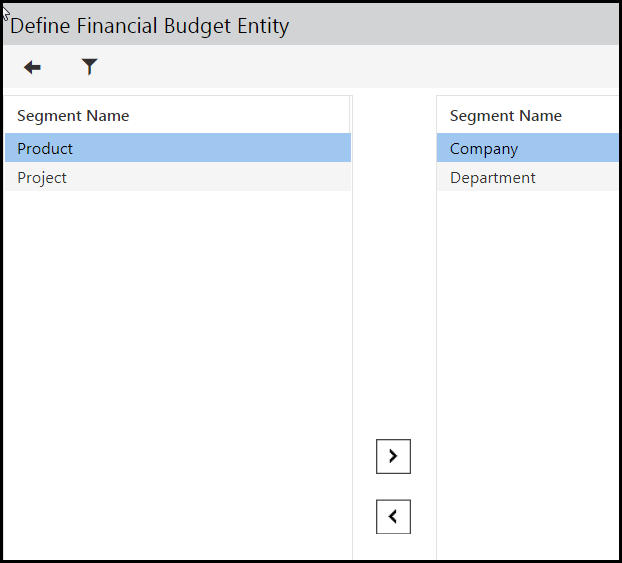
Here is the Budget Entity Hierarchy based on the definition for the budget entity opened from the Hierarchy Management screen. Notice the hierarchy is a combination of company (Everest) and department (Sales, Ops, Corp Mgmt Group).
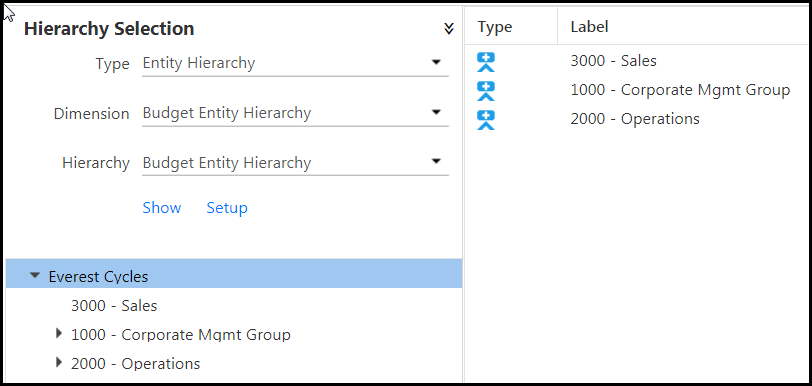
Why Do I Need Budget Entities
Budget entities are a way to simplify potential dimension member Combinations for easy Budget maintenance and data entry in Planning.
In Practice
Let's take a sample set of dimensions and dimension members shown below.
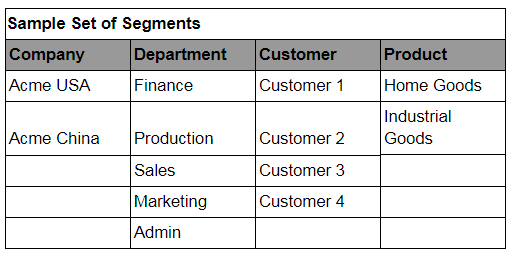
The above dimension members can result in a vast number of potential combinations, some of which may not make much business sense. To better explain this, see the table below. Notice that a Combination of Acme USA - Production may not make sense because there may not be any production activity in the USA. Similarly, a combination of Acme China - Marketing may not make business sense. So Budget entities are the combinations - which are actually used by a Business and for which users want to maintain Budgets or Forecasts
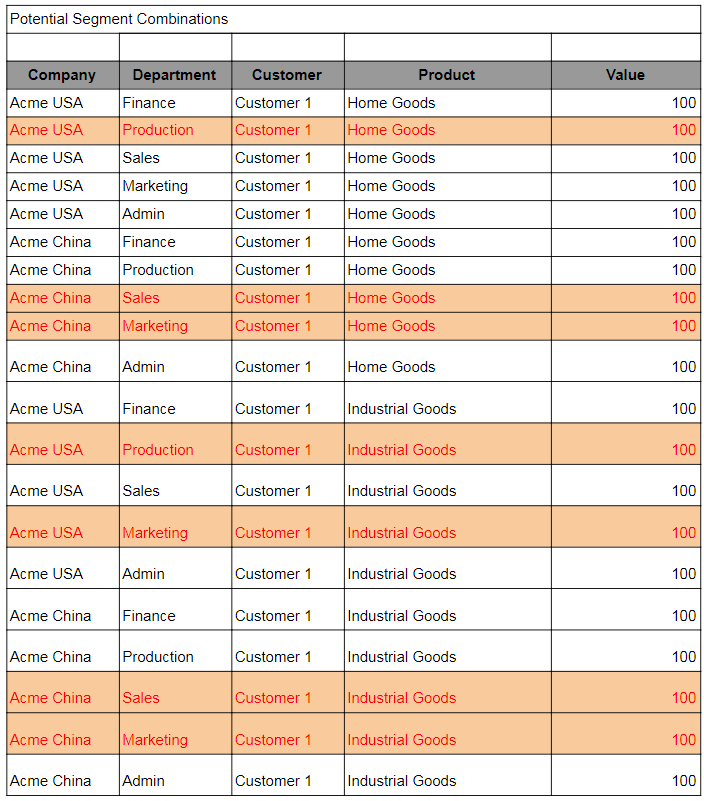
Users may decide that their normal data entry is based on a combination of Company - Department - Product and they may choose to select customer during a data entry period. If this is the case, the result will be the budget entity tree structure shown below (without customer), which has only those combinations (company - department - product) of dimensions for which budgeting is performed.
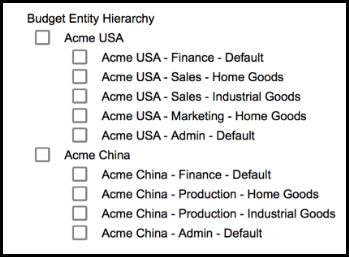
Setup for Entity Type Hierarchies
Create the budget hierarchy and its budget entities. A budget hierarchy is used to manage budget workflows and assign budget responsibilities to budget managers. It allows budget managers to work with their parts of the overall budget plan or forecast. By assigning budget managers to a specific part of a budget, you can provide them with budget input, approval and other budget workflow privileges.
Clicking Setup displays the Entity Type Setup page. The budget entities you add here become associated with the children, or the lowest level members.
On the Entity Type Setup page, defined entities are displayed. You can edit existing entities.
To add a new budget entity, click Add.
On the Add Entity Type page, complete the following fields:
Name / Description - Enter a name and description for the entity type.
Basis - You can base the entity type on attributes or segments .If you select Based on Attribute(s), the attribute mapping pane is opened.
Enable Default Member Selection - By selecting this checkbox, you can set up the default segment member of the attribute segment for the entity during entity setup. This helps administrators define a default member of the attribute segment for a budget entity based on the selected attribute value.
Dimensions - Lists all the dimensions with configured attributes.
Unmapped Attributes - Available when you select the Based on Attributes Basis. Select the attributes you want to map (associate) with the new budget entity type. Click the forward arrow to map or associate selected attributes.
Mapped Attributes - Available when you select the Based on Attributes Basis. Displays the attributes associated with the budget entity type.
In the example below, the Project entity type was created on the Project dimension. It is a user-defined attribute, which is displayed in the budget entity hierarchy so that project codes can be selected for professional services.
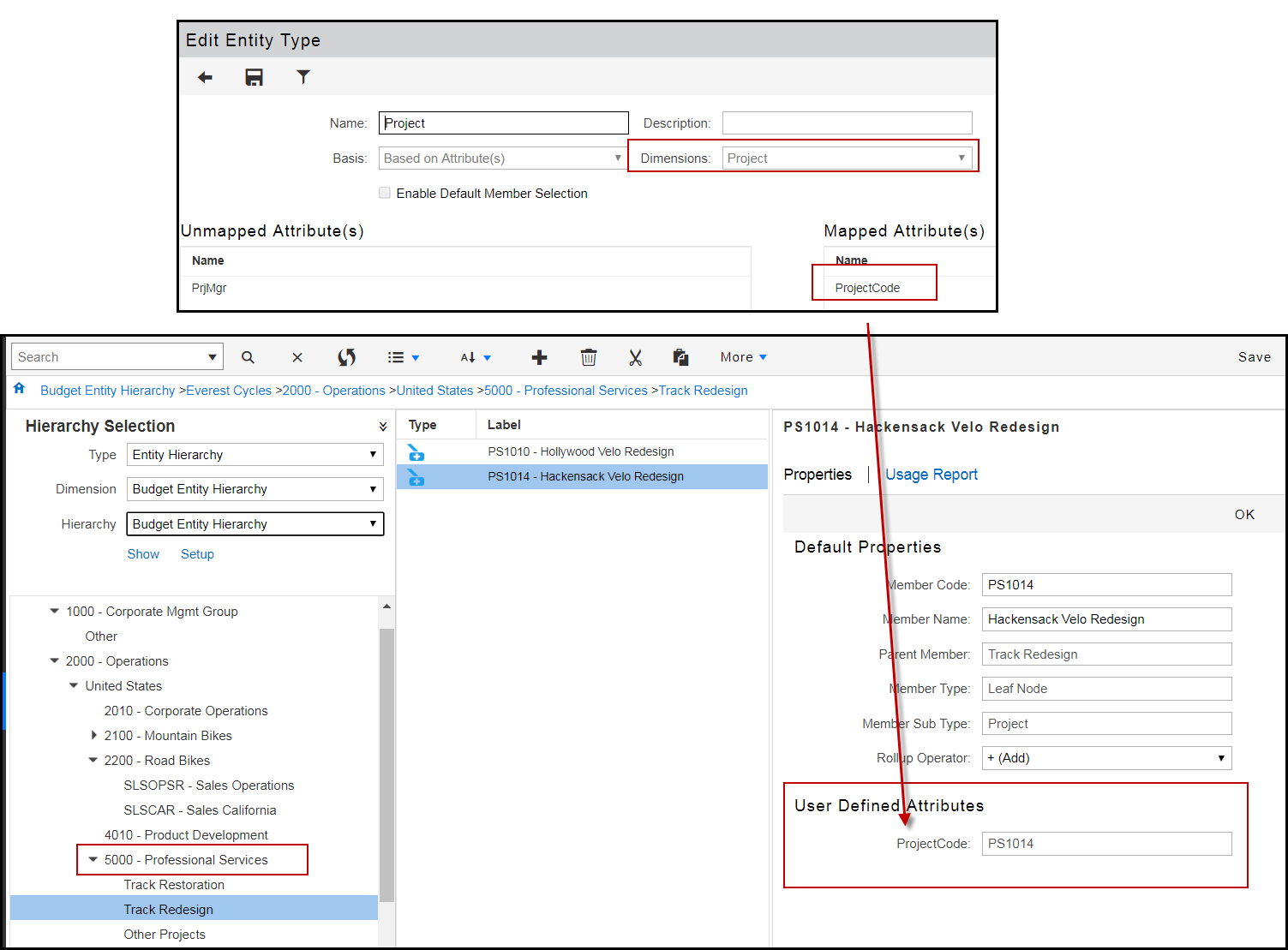
Budget Hierarchy & Entity Setup
The following examples are provided for a better understanding of budget entity and hierarchy setup.
EXAMPLE 1:
In this example, a credit union has two segments in their general ledger; Branch and Account. However, the credit union would like to budget by department, product line, and occasionally report by product type. So, Branch, Account, Department, and Product Line dimensions are created in Planful. Budget entities are created for Branch, Department, and Product Line. For example, budget entity 1000 is a combination of the Wichita KS North branch, the Personal Banking department, and the Checking project line. Templates are set up for this budget entity so that users can perform budgeting tasks in the Planning Control Panel.
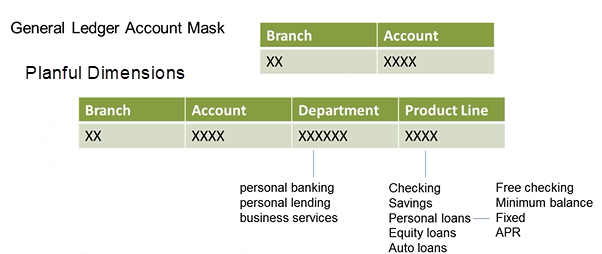
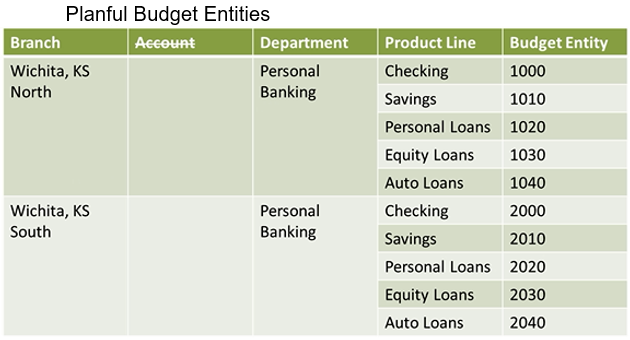
EXAMPLE 2:
In this example, a pharmaceuticals company has 5 dimensions in its source general ledger. However, the company would like to budget by region. The company would also like to use Planful Consolidator to handle intercompany transactions. Seven Planful dimensions are created. The InterCo dimension is for intercompany transactions. Budget entities are setup using a combination of dimension members. So, budget entity NE_P_SPEC represents the Northeast region Pharmaceuticals business unit and the Specialty Medicine product.


How to Create a New Department as a Budget Entity
To make a new Department, Division or other segment member available for budgeting in the Planning Control Panel, the segment member must be created as a Budget Entity. Complete the following steps.
Navigate to Maintenance > Hierarchy > Hierarchy Management and select Entity Hierarchy for Type. Click Show.
Click Add within the area of the hierarchy where you want to add the entity.
Select Leaf Node for Node Type and Default Budget Entity for Node Sub Type. Note that attributes also available in the Node Sub Type list box.
In the New Member Properties pane enter the Entity Code, Entity Name and the Currency.
Select the relevant segment members for the segments that make up your Budget Entity (e.g. Company/Department, Company/Location/Division. An example is provided below.
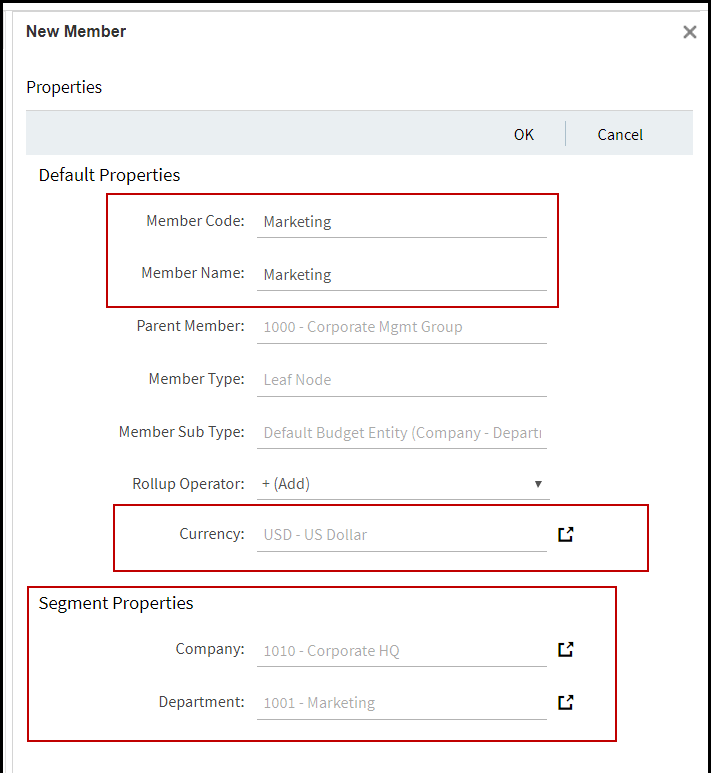
Click OK and Save. The new entity is shown in the hierarchy (see image below).
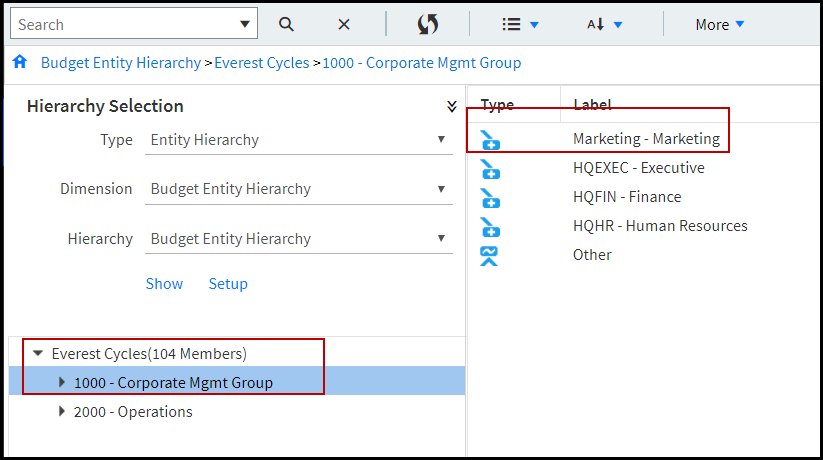
The new entity is also shown in the Planning Control Panel below.

Note that Approval Role Access must be provided to access entities in the Planning Control Panel.

